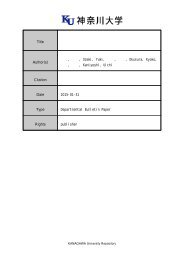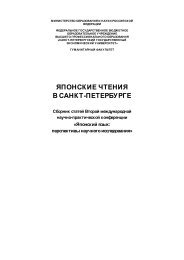to Learners with Special Educational Needs
e-textbook SEN
e-textbook SEN
Create successful ePaper yourself
Turn your PDF publications into a flip-book with our unique Google optimized e-Paper software.
Pokrivčáková, S. et al. (2015). Teaching Foreign Languages <strong>to</strong> <strong>Learners</strong> <strong>with</strong> <strong>Special</strong> <strong>Educational</strong> <strong>Needs</strong>:<br />
e-textbook for foreign language teachers. Nitra: Constantine the Philosopher University. 128 p.<br />
ISBN 978-80-558-0941-0<br />
Model exercises for students at the age of 10 (5 th grade)<br />
1. Students label the house. They can use the words below <strong>to</strong> help them.<br />
2. Students listen <strong>to</strong> the recording and draw the house described in the recording.<br />
3. Students describe their own house using the vocabulary that they practised in previous two<br />
exercises.<br />
These exercises are suitable for dysgraphic students because they can see all the new<br />
vocabulary written on the paper and they have <strong>to</strong> practise this vocabulary in various ways. At<br />
first they only choose the correct words from the table then they circle the words, they write<br />
them down and then they use them in the speaking activity. In this way they learn new<br />
vocabulary and they also practise the writing of the given words.<br />
4. Students circle the equipment which they can see in Amanda´s bedroom.<br />
5. They write down the things which they have in their own bedrooms.<br />
6. Students fill the missing words in<strong>to</strong> the short article about John´s bedroom.<br />
Within 3 exercises they use the same vocabulary in various types of exercises. The words<br />
constantly repeat so they write them several times and this way, they practise their writing<br />
skills.<br />
7. Students match the pictures <strong>with</strong> the definitions. They write down the correct answers in<strong>to</strong> <strong>to</strong><br />
table below the exercise.<br />
8. Students circle the housework which they do at home and then they write this housework in<strong>to</strong><br />
the exercise.<br />
Students <strong>with</strong> dysgraphia remember better if they have visual input, therefore the picturedefinition<br />
matching exercise is suitable for them and makes their learning easier.<br />
9. Students match the halves of the sentences. They match the activities which we usually do in the<br />
bedroom. After matching they write the number of the sentence next <strong>to</strong> the correct picture<br />
which describes that activity.<br />
10. Students fill the missing adverbs of frequency in<strong>to</strong> the sentences. After completing the exercise,<br />
teacher can ask the questions about the housework they do at home and how often they do it.<br />
They can lead pair or group discussion<br />
11. Students fill in the crossword and then they find the hidden word which defines the part of the<br />
house. Below the crossword there is a table <strong>with</strong> the words which students have <strong>to</strong> fill in the<br />
crossword.<br />
They see all the words <strong>to</strong> be used in the crossword, so they have <strong>to</strong> write them down, <strong>to</strong> practise<br />
the writing of these words. After all exercises, the teacher can lead discussion <strong>with</strong> students<br />
because it is said that dysgraphic students learn better by listening and speaking.<br />
67






